#universal monsters frankenstein
Explore tagged Tumblr posts
Text
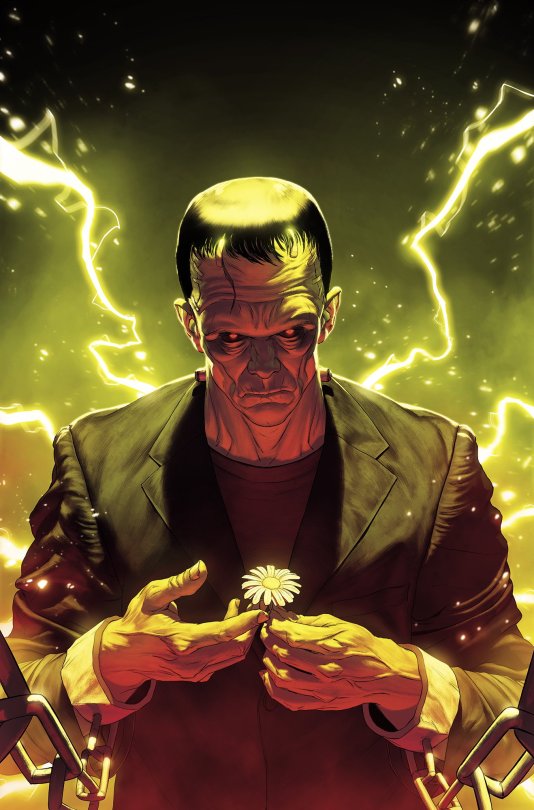
Universal Monsters: Frankenstein 1 (2024) variant by Mattia De Iulis
53 notes
·
View notes
Text
Frankensteins Monster portrait by boris karloff
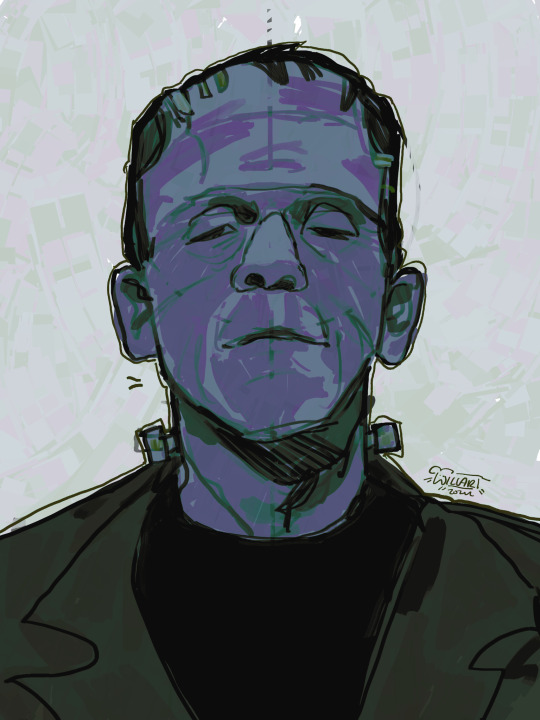
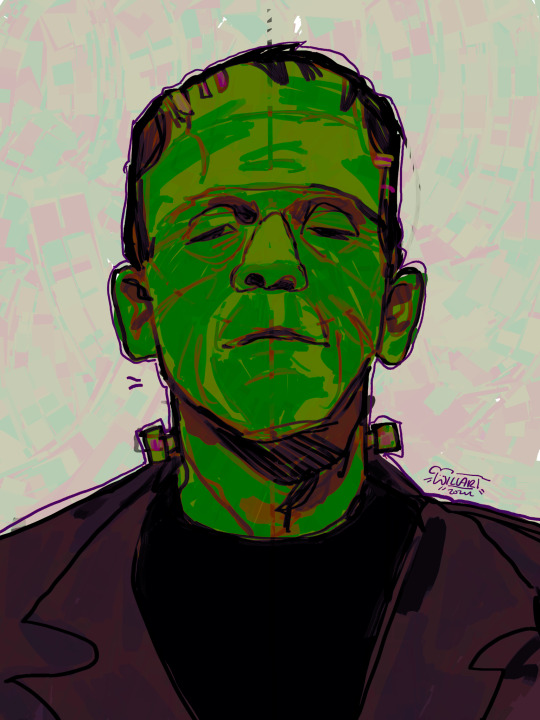
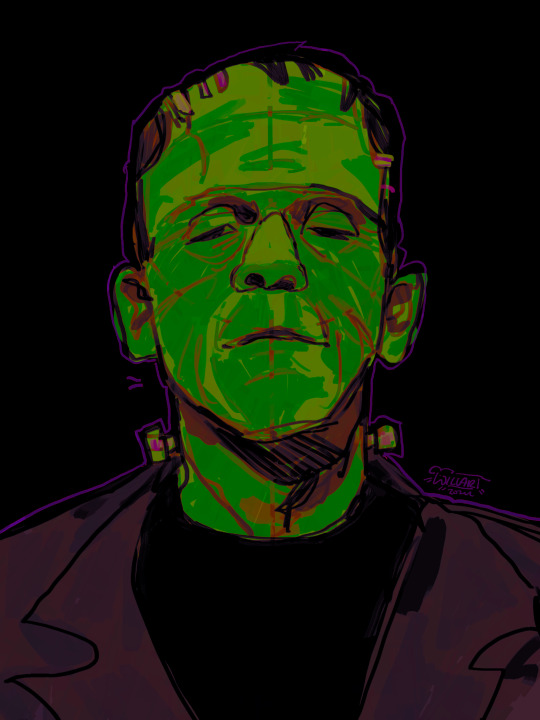
Just little note ,, how do you fuck up the name of the main character ( his name is not fucking henry ,, how do you mess that up)
I did these photo studies in preparation for this painting

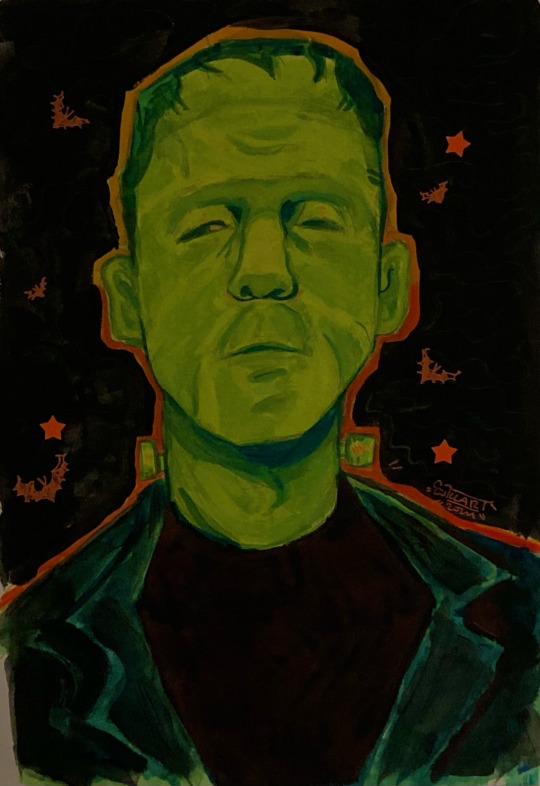
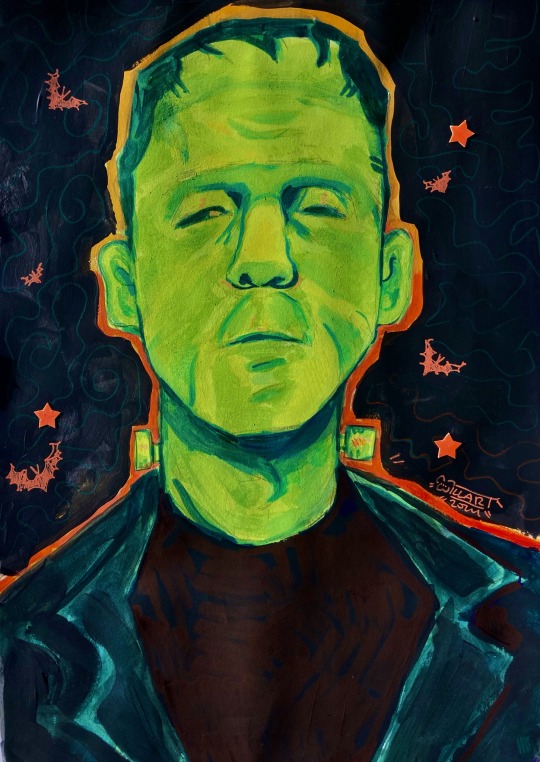
Sadly am no too happy with how it turned out, but for painting something like this in that size, wich i haven’t done in 4 years, i think i still did pretty good
#art#digital art#my art#fanart#traditional art#guache#frankenstein#frankensteins monster#universal monsters#universal monsters frankenstein#frankenstein Boris Karloff#boris karloff#artist on tumblr#disabled artist#queer artist
95 notes
·
View notes
Text
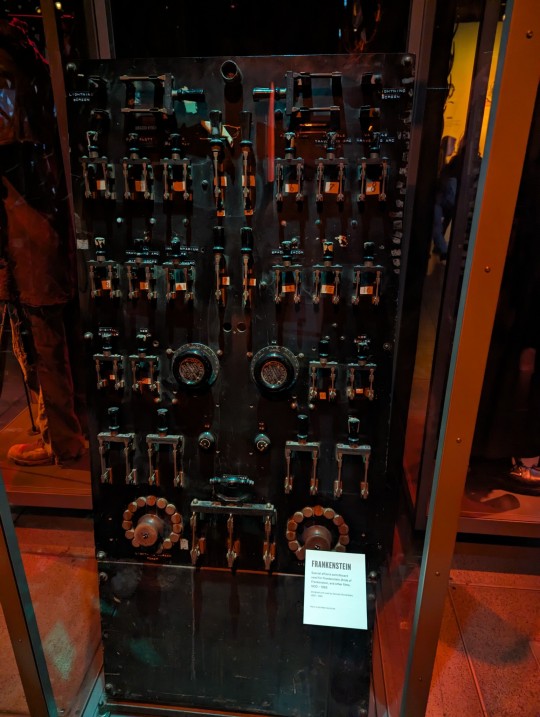
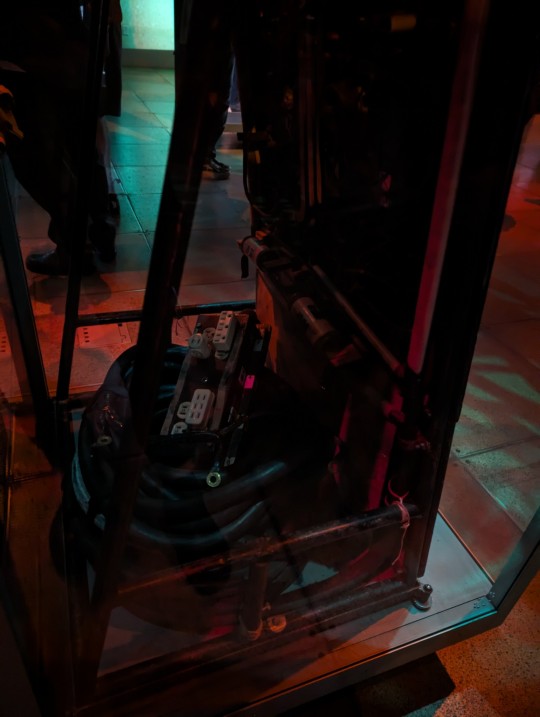

I can't believe I never posted these pictures! Back in March I had the pleasure of finding this set piece/prop from the 1931 James Whale Frankenstein film at the MoPOP Museum in Seattle. It's really amazing to see a piece like this in real life, and not just in black and white film. I really should go rewatch the film and see if I can spot it in Henry's (Victor's) lab. I'm a scenic designer for theatre so this kind of stuff is especially nerdy for me.
The entire MoPOP museum is really fantastic, I would love to go back if I find myself in Seattle again. I actually only had 2 hours to see the entire place because the conference I was at rented it out and that's all the time we had (and if you've ever been you know that's a criminally short amount of time to see the entire museum). The horror section was really awesome in general. My only gripes are that I wish the plaques had more specific and detailed information about the pieces on display, and I wish they had more Frankenstein pieces on display like how they have an entire Vampire/Bram Stoker chapel (no literally there is a chapel with a bust of Bram it's incredible). I also think Frankenstein should have been in the sci-fi section, but I also get why it makes more sense to the average joe to have it in horror.
If anyone has more specific info about this piece I'd love to hear it, truthfully I know basically nothing about it other than it was used in the James Whale Frankenstein films. But I was absolutely geeking out to find this, I actually almost missed it entirely but thankfully the friend I was with helped me spot some Frankenstein among everything!
Edit: Upon further investigation this might not actually be screen used? It may in fact be a dimmer board used in making film, like what was used in theatre lighting before the advent of our modern digital dimmer boards (which makes sense considering this was used in the very early 1930's). Seriously if anyone knows more please share, I love learning about film tech!
#face reveal if you can see me in the reflection lol#i was scrolling through my camera roll and found these pictures#i cant believe i almost forgot about them!#i also have a picture of myself with the bram bust lol#frankenstein#frankenstein or the modern prometheus#mary shelley#james whale#james whale Frankenstein#universal monsters frankenstein#waateeystein speaks
6 notes
·
View notes
Text
Universal Monsters: Frankenstein #2 Review
Universal Monsters: Frankenstein #2 Image Comics Written by Michael Walsh Art by Michael Walsh Colors by Toni-Marie Griffin Letters by Becca Carey The Rundown: Henry Frankenstein continues to go mad as his experiment kills to be free. A police officer finds a dangerous man robbing someone in an alley and as he gives chase, the encounter leads to his and the assailants violent deaths.…
0 notes
Text







She's alive! Alive!
ELSA LANCHESTER as THE MONSTER'S BRIDE in BRIDE OF FRANKENSTEIN (1935) dir. James Whale

#filmedit#oldhollywoodedit#horroredit#Bride of Frankenstein#The Bride of Frankenstein#universal monsters#old hollywood#Elsa Lanchester#classicfilmsource#classicfilmblr#horrorfilmgifs#horrorwomensource#silverscreendames#filmgifs#dailyflicks#fyeahmovies#junkfooddaily#*#1k
2K notes
·
View notes
Text




"the creation" animatronic figure in the monsters unchained: the frankenstein experiment pre-show at EPIC UNIVERSE.
#monsters unchained: the frankenstein experiment#frankenstein's monster#epic universe florida#universal monsters#horroredit#HELLO!!!!????? HE IS SOOOOO AMAZING#and.... he's so cute :') i love seeing other ppl stay the same#thank u to the creative team for making him hot 😘#gifs by me#horror
622 notes
·
View notes
Text
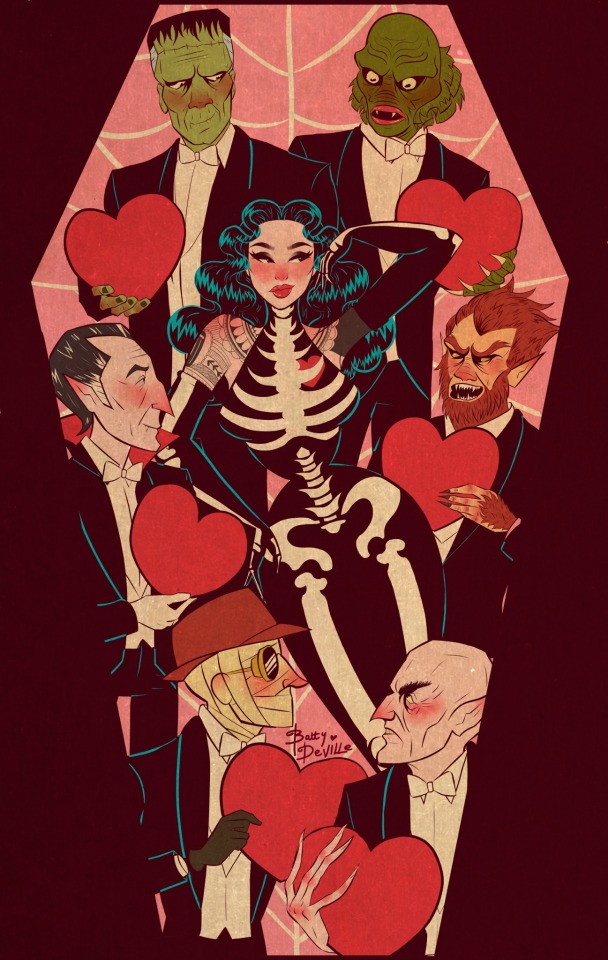
Monsters are a Ghoul’s Best Friend 💕
IG: Battydeville
#my art#artists on tumblr#illustration#battydeville#digital art#pinup#pinup art#50s pinup#vintage aesthetic#classic monsters#classic movies#universal monsters#creature from the black lagoon#gill man#dracula#bela lugosi#frankenstein#the invisible man#nosferatu#the wolf man#horror pinup#vintage art#horror#classic horror#diamonds are a girls best friend#marilyn monroe#count orlok
5K notes
·
View notes
Text


Frankenstein and The Bride of Frankenstein - art by Anthony Petrie (2020, 2024)
#anthony petrie#frankenstein#the bride of frankenstein#universal monsters#movie poster art#horror art#boris karloff#elsa lanchester#james whale#30s horror#30s movies#1930s#2020#2024
2K notes
·
View notes
Text
1K notes
·
View notes
Text

1K notes
·
View notes
Text




Bride of Frankenstein x Your Monster + Lisa Frankenstein
#I’m reuploading my old edits sorry about the spam#bride of frankenstein#lisa frankenstein#your monster#the bride#lisa swallows#laura franco#universal monsters#horror#film#horroredit#filmedit#tvandfilm#fyeahmovies#userstream#userbbelcher#myedit
472 notes
·
View notes
Text
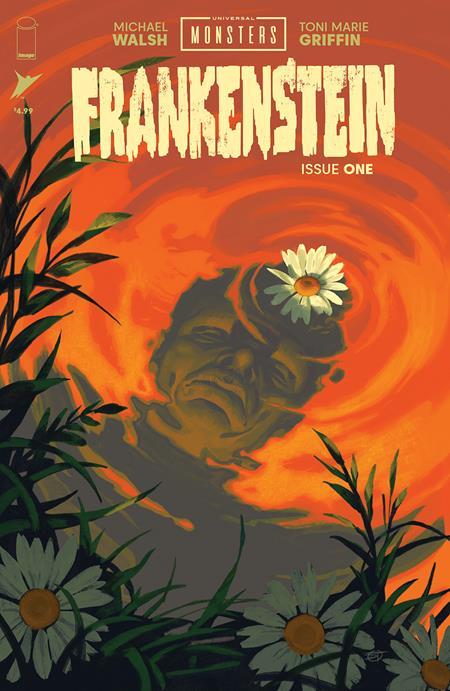

Universal Monsters: Frankenstein #1 (2024) variant by David Talaski
17 notes
·
View notes
Text

My favorite movies
#horror#vhs#horroredit#hellraiser#jeepers creepers#the exorcist#thirteen ghosts#ghost ship#the crow#horror edit#vhs edit#80s horror#50s horror#2000s horror#horror movies#halloween#killer klowns from outer space#house of wax#frankenstein#the creature from the black lagoon#universal monsters#house of 1000 corpses#rob zombie#the texas chainsaw massacre#the lost boys
1K notes
·
View notes
Text
Frankenstein Adaptation Review #2: Frankenstein (1931)
Masterpost of my Frankenstein Reviews
Title: Frankenstein
Year: 1931
Medium: Film
Director: James Whale
Produced by: Universal Pictures
Synopsis/Intro
One of Universal Pictures original monster films, Frankenstein (1931) sets a precedent for many future adaptations of Shelley’s story. It is also responsible for creating many of the iconic symbols that we associate with the mythos of Frankenstein (even if those symbols have little to do with the original story.) I went in mostly blind, but was very pleasantly surprised at how much I enjoyed this film, and better appreciate the creative license it took when adapting the novel. This is the first in a long series of Frankenstein-based Universal monster movies, and I am very curious to see where the films go from here! Buckle in because this is a long one…
Grading
Faithfulness to the Source Material
First off, this film is extremely different from the book. I didn’t realize this going in, I knew there would be some differences obviously, but even just from the opening credits I was so surprised at just how different it was. Right off the bat, we establish that our main character is actually named Henry Frankenstein, and Victor takes the role of what would loosely be Henry in the novel. (Elizabeth does stay the same and I think that is very iconic of her.) I think this name swapping is really interesting, and I’m sure some film/literary scholar has a much deeper thematic analysis on this than I could write. My take is that it was a way of distancing this version of the story from the novel right from the get-go, letting audiences know before the first line of dialogue is even spoken, that this story will be a very different story from its inspiration, and your expectations of this story will be literally flipped. Henry also now has a sidekick/apprentice named Fritz, who I assume is the original version of “Igor” that we see in other adaptations (but I guess I must continue watching more movies to prove that assumption!) I won’t go through every single character here, but those to me were the stand-outs worth mentioning in my own game of spot the difference.
Like the novel, Henry is indeed a college drop-out, although here he leaves academia to create his creature, rather than as a result of his creation. This adaptation also makes our Frankenstein more open to sharing his creation with others, although he still does this begrudgingly. And in general this Henry is not too dissimilar in characterization to the novel’s Victor. They are both obsessive scientists who crave the power of great discovery, and want to overcome the state of death and create life from it. They also both put their work before their love, ignoring Elizabeth and their father in the name of their occupation and obsession. I think Frankenstein’s characterization here, although not one-to-one with the novel, does the most work of relating this film back to the novel, especially when so much else of the plot and characters are completely different. Frankenstein the novel, and Frankenstein the Universal Monster movie are two very different mythos that I am coming to understand are often conflated. I want to better understand and explain how this film created its own modern mythos, but I also want to specifically highlight that Frankenstein himself is very similar between the two.
More on that modern mythos I was talking about, this film is responsible for so much of what we today associate with Frankenstein. The lighting table hoisted into the sky to give life to the creature, the hunchbacked sidekick of Frankenstein, the very iconic “it’s alive!” line, and of course the creature design itself. Most of these are not present in the book at all, or at best are very loosely based on certain descriptions in the novel. But I also don’t hate that they exist here! The lighting table is an homage to the lighting strike that book Frankenstein witnessed as a child that helps spark (pun-intended) his interest in science. Fritz here could be interpreted as a loose allegory for Henry Clervil in the book. Frankenstein’s gleeful “it’s alive!” is also a great foil to the immediate regret and fear that book Frankenstein feels at the successful creation of his creature. I think the film pays a lot of respect to its source material while still being its own creature (once again pun-intended). “Frankenstein”, in my opinion, is a very difficult novel to 100% faithfully adapt. This version chose to completely change the story to serve its own artistic goals and resources, their goals being to create a more horror-oriented and visually-minded adaptation of Shelley’s novel. And we know they were successful because it is one of the most iconic and famous monster films of all time.
So to conclude this section, no, this film had very little accuracy to the novel, but for all the reasons above, I do think in many ways it was still a good and somewhat faithful adaptation in its own right.
Total Category Score: 7/10 points
Production Design
There is so much to say here about this film’s design, both scenically and costume-wise. Starting with the production design, this film distinguishes itself from the novel by putting our setting in a German village set at about the film's release of 1931. Obviously this is another big change from the source material, but I like this decision for two reasons. Firstly, it was probably more practical from a production/costume design perspective, because with all of the other special elements of creature creation in play, adding a period setting on top of that would have an added difficulty that would not be present by just setting it in their modern day. Secondly, I think setting this film in a modern time to its original viewers makes the horror feel more plausible and real to those original viewers. Obviously us viewers over 90 years later won’t feel the same way with this exact film, but it’s probably a similar feeling to what we feel when we watch contemporary horror films today. On the other hand, I am not a huge fan of setting this film in what I presume to be Germany. There are a few different European countries that play a role in the novel, and Frankenstein is a very German-sounding name (I don’t have the linguistics knowledge to tell if if it actually is or not), and some of the creatures time in the book is spent in Germany, so I understand where the decision probably came from. However, I still wish it was set in Switzerland instead. I think this is another way that the mythos of this film tends to overshadow the actual events of the novel, and although it is a minor point, the backdrop of the Swiss alps where Frankenstein lived and where much of the actual conflict between Frankenstein and his creature took place would have been so cool and beautiful to have from a design standpoint. And without doing more research, I don’t have the off-hand knowledge to say how accurate the design of this German town/costumes were, but as a viewer it was beautiful and it did give a strong sense of the given setting. Finally, I want to acknowledge how interesting the windmill was as a choice of setting for Frankenstein’s laboratory. Many adaptations put him in some kind of castle situation, but the windmill feels right for the setting they chose. It gives the impression that Frankenstein cobbled together this somewhat remote lab as to be far enough from the village to have privacy and a high elevation, but also still be close to home and Elizabeth for their upcoming wedding. And the imagery of this burning windmill at the film’s ending is just so epic and even gives a somewhat ambiguous ending as to if the creature was able to escape or not. Although, upon further inspection, the interior was almost entirely stone and the exterior was entirely wooden, so with this continuity error I don’t know how well it would have actually burned, but maybe that’s for me to do more historical research on. (Also I am very excited to one day visit the Frankenstein windmill restaurant that is being built in Universal’s new park in Orlando.)
And now the obvious star of the show, the costume and creature design. Another reason I like their choice of time period is because we get to see these late 20’s/early 30’s garments that tend to get forgotten for the more stereotypical 20’s and 30’s silhouettes. In particular, I was in love with every costume we see in the wedding scenes. Elizabeth’s wedding dress was so beautiful, and the way her veil/train would drape across entire rooms when she moved evoked art nouveau fashion plates which I am obsessed with. The menswear also did not disappoint, I love the outfit he changes into for the final scenes of the film with the flare-hipped breeches. I did a little bit of research and learned that although these garments were mostly associated with motorcycle policemen, they were also associated with big-game hunters, which is perfect for Frankenstein as he is attempting to literally hunt his creation in these scenes (fun fact this garment is also called a “Jodhpur”.) They are a big goofy considering he is not wearing them while horseback riding, but it makes sense thematically so it gets a pass from me.
The creature design gets its own paragraph because there is so much to unpack here. Going in to watching this film, I knew what the creature design would be. It is extremely iconic, and it is what most people associate with the character and is the basis for most adaptations after it. Conversely, because it is so iconic, I was seeing it out of its original context and I was actually not a huge fan of the design in terms of faithfulness to the novel. But now having seen the film and seeing this design in context, I think I’ve mostly changed my mind. The novel only gives us a vague description of the creature, but we know that Frankenstein built him to be beautiful but he ended up being terrifying to all that saw him. I was surprised to realize that the film's design balances this pretty well. He is obviously still grotesque, with his elongated head (a possible nod to the creature design of the 1910 silent film version), neck screws, darkened facial features and scars across his body. But he is also very well-kept and handsome in many ways. His hair is neatly and intentionally styled, the scars are symmetrical and surprisingly neat for being a bunch of separate body parts stitched together. Even his outfit, which is intentionally designed to be too small in some proportions to make him appear larger and more hulking, is a clean suit and pants. The designer has managed to give him these humanizing aspects, while still making him appear horrifying and other-worldly. And it is a testament to the genius of these design decisions that this creature’s design has stood the test of time. The only things I might have changed would be putting his screws at his temples rather than his neck, and changing out his dark t-shirt looking garment for some kind of collared shirt (only because he unintentionally looks like he’s from the 80’s, but I guess it is kind of cool that this creature dressed in trends 50 years before they actually happened.) Obviously that is me being nitpicky, but I absolutely get the obsession with this creature design now, and I am excited to see how or if it evolves in this film’s sequels.
Total Category Score: 9/10 points
Entertainment value
Despite the extensive creative liberties that this film took in adapting Shelley’s novel, I still had a great time watching it. There is always a worry with watching these old films that they will automatically be boring to a modern eye, but I don’t think this film had that issue. I was always anxious to see what Frankenstein or the creature would do next, and knowing the plot of the book, I was always surprised because the plot of the film was so different. The creature’s kill-count is much lower than in the book, here he is only responsible for killing the doctor and a young girl named Maria. The scene with the creature and Maria was one of my favorites. It was a necessary moment to show the creature’s humanity, and that it only really meant to hurt those who had antagonized him first. He accidentally and very suddenly kills the young Maria, and this is what ignites the village to hunt him down. [edit: I had a later realization that this scene parallels a scene in the book where the creature saves a young girl from drowning. It’s interesting that in both mediums, whether the creature saves her or accidentally dooms her, he is persecuted. Another example of how this movie literally flips the script of the book.] Like the novel, he is continuously misunderstood and mistreated by everyone he meets. But unlike the novel, where the young William immediately distrusts the creature, little Maria only shows him immediate kindness, and reminds us of the innocence of children. I like that the film implies that children are not born with hatred, but learn it instead, a theme that we mostly don’t see in the novel. And that’s the great thing about film adaptation, we get to explore themes and ideas that might have been glossed over or missed in the source material, and I am very glad that this film did that. And obviously the horror of this very old film will not feel the same watching it today as it would have when it was originally released, but at times I still found myself feeling the horror which was surprising.
Total Category Score: 8/10 points
Bonus Points
Character(s) included/mentioned (1 point each):
- Robert Walton and/or Henry Clerval: no. - The DeLacey Family: no (Maria and her father are a close allegory though.) - Justine Moritz: no. - William and/or Ernest Frankenstein: no.
Victor(y) points (1 point each):
- Is Victor aged 18-26 years old: Yes! - Is Victor a college dropout: Yes! - Does Victor have an accent that is not American or British: no.
Miscellaneous (1 point each):
- Setting is primarily in Switzerland: no. - Are there homoerotic undertones: no. - Does the Creature have intelligence: no.
Total Category Score: 2/10 points
Final Score: 26/40 points
[Housekeeping notes: I had to change to the legacy post editor because this review was literally too long for the new editor to handle. If anyone has some tips for that let me know, in the meantime the text formatting might just look slightly different. Also I’ve been making slight review formatting changes, so I may go back and update previous posts to reflect those changes, although the content of the review will be the same. Thanks y’all!]
#frankenstein#frankenstein or the modern prometheus#mary shelley#victor frankenstein#Frankenstein movie#universal monsters#universal monsters frankenstein#movie review#frankenstein adaptation#waateeystein reviews
10 notes
·
View notes
Text
save me allegorical monster… save me…. save me beast that serves as a literary symbol… save me
#the wolfman#werewolf#vampire#vampires#universal monsters#ghosts#ghouls#zombies#zombie#werewolves#frankenstein#mary shelley#mary shelley’s frankenstein#resident evil#silent hill#pyramid head#silent hill 2#silent hill 3#american werewolf in london#creature from the black lagoon#shape of water#interview with the vampire
3K notes
·
View notes
Text








To a new world of gods and monsters!
BRIDE OF FRANKENSTEIN (1935) dir. James Whale
#filmedit#horroredit#oldhollywoodedit#Bride of Frankenstein#The Bride of Frankenstein#universal monsters#old hollywood#horrorfilmgifs#junkfooddaily#dailyflicks#filmgifs#fyeahmovies#moviegifs#classicfilmsource#classicfilmblr#*#1k
2K notes
·
View notes